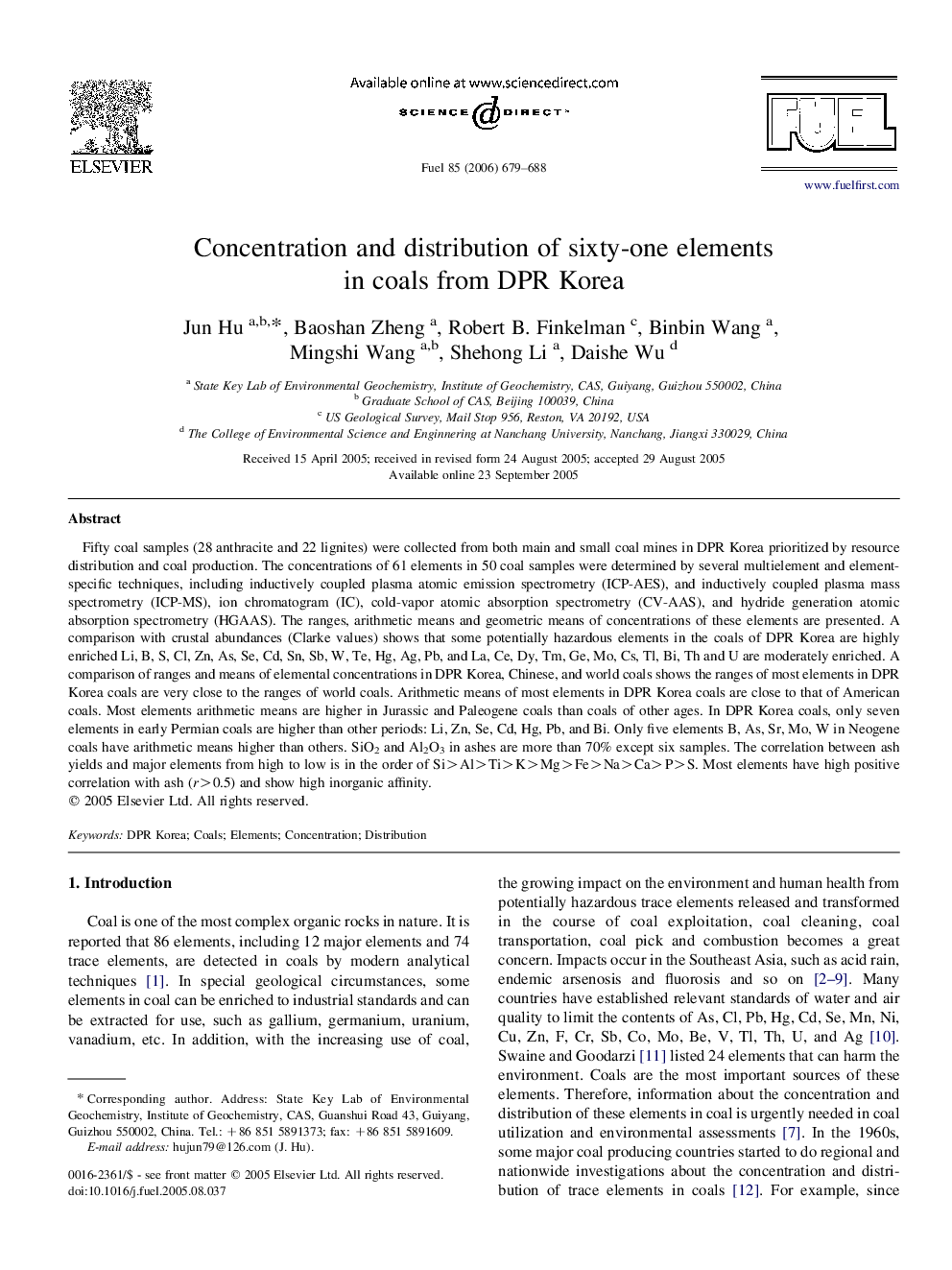| Article ID | Journal | Published Year | Pages | File Type |
|---|---|---|---|---|
| 208764 | Fuel | 2006 | 10 Pages |
Fifty coal samples (28 anthracite and 22 lignites) were collected from both main and small coal mines in DPR Korea prioritized by resource distribution and coal production. The concentrations of 61 elements in 50 coal samples were determined by several multielement and element-specific techniques, including inductively coupled plasma atomic emission spectrometry (ICP-AES), and inductively coupled plasma mass spectrometry (ICP-MS), ion chromatogram (IC), cold-vapor atomic absorption spectrometry (CV-AAS), and hydride generation atomic absorption spectrometry (HGAAS). The ranges, arithmetic means and geometric means of concentrations of these elements are presented. A comparison with crustal abundances (Clarke values) shows that some potentially hazardous elements in the coals of DPR Korea are highly enriched Li, B, S, Cl, Zn, As, Se, Cd, Sn, Sb, W, Te, Hg, Ag, Pb, and La, Ce, Dy, Tm, Ge, Mo, Cs, Tl, Bi, Th and U are moderately enriched. A comparison of ranges and means of elemental concentrations in DPR Korea, Chinese, and world coals shows the ranges of most elements in DPR Korea coals are very close to the ranges of world coals. Arithmetic means of most elements in DPR Korea coals are close to that of American coals. Most elements arithmetic means are higher in Jurassic and Paleogene coals than coals of other ages. In DPR Korea coals, only seven elements in early Permian coals are higher than other periods: Li, Zn, Se, Cd, Hg, Pb, and Bi. Only five elements B, As, Sr, Mo, W in Neogene coals have arithmetic means higher than others. SiO2 and Al2O3 in ashes are more than 70% except six samples. The correlation between ash yields and major elements from high to low is in the order of Si>Al>Ti>K>Mg>Fe>Na>Ca>P>S. Most elements have high positive correlation with ash (r>0.5) and show high inorganic affinity.
